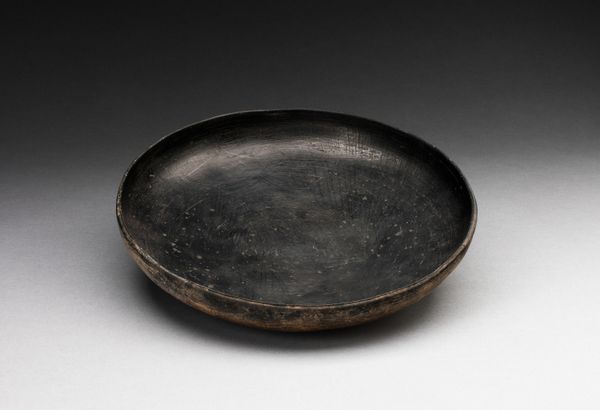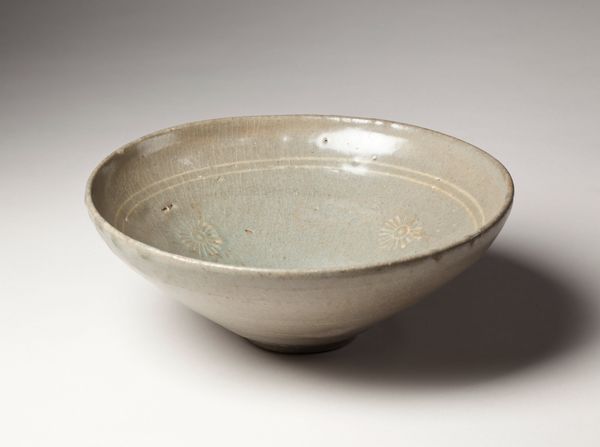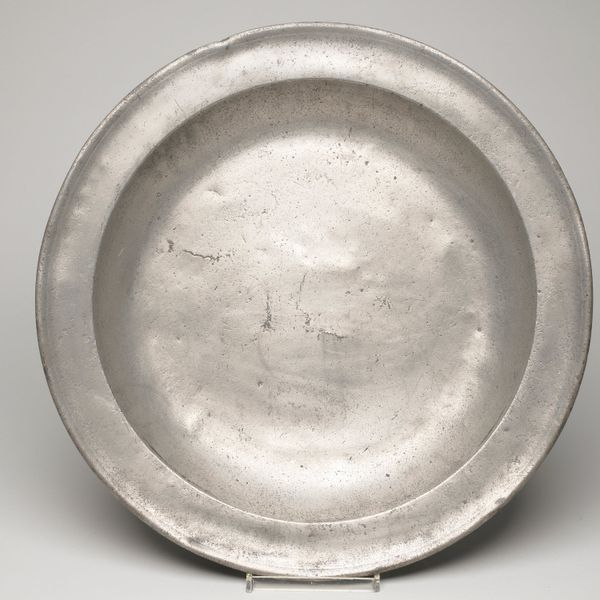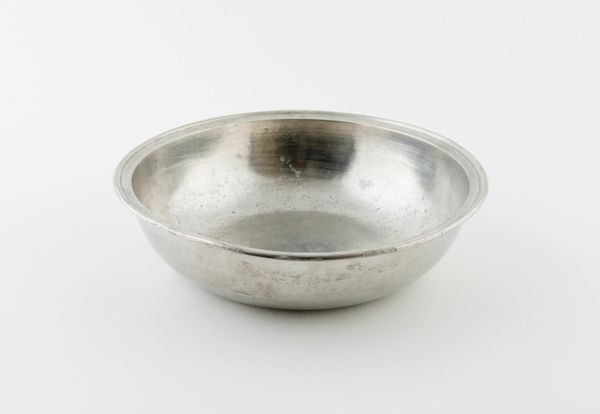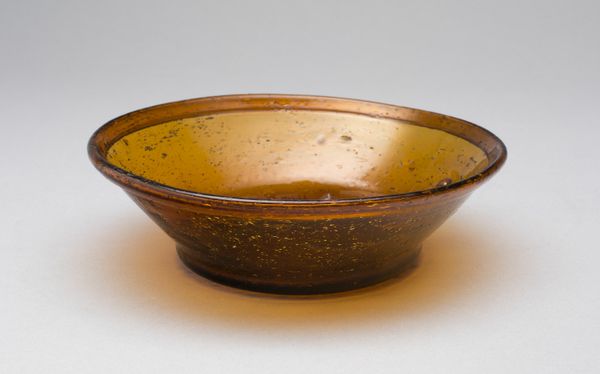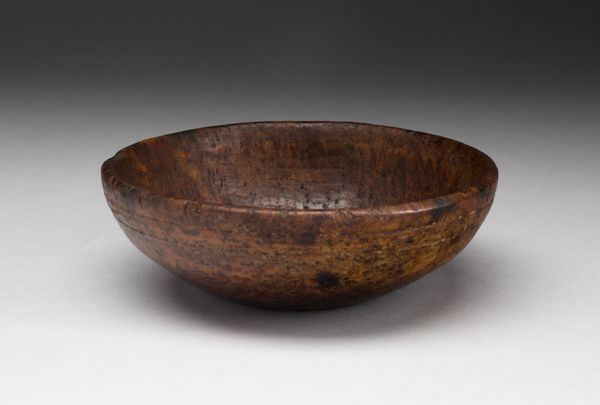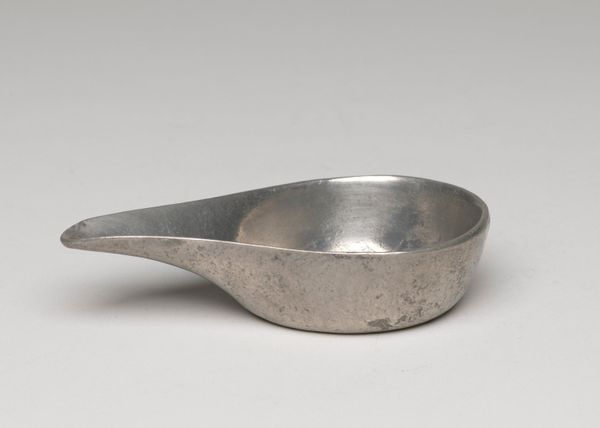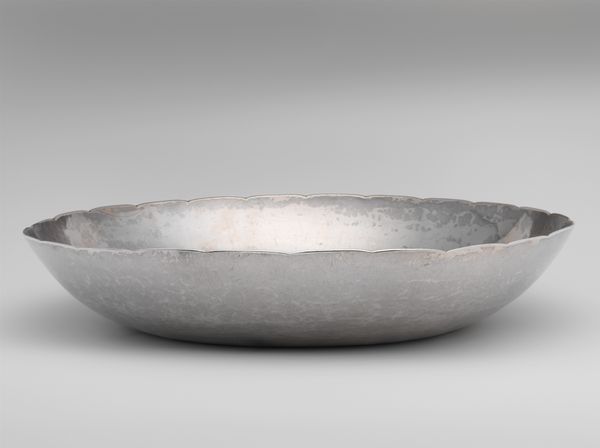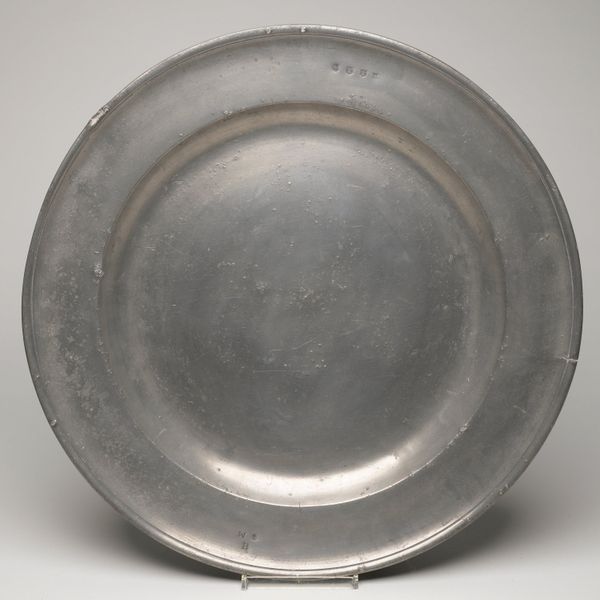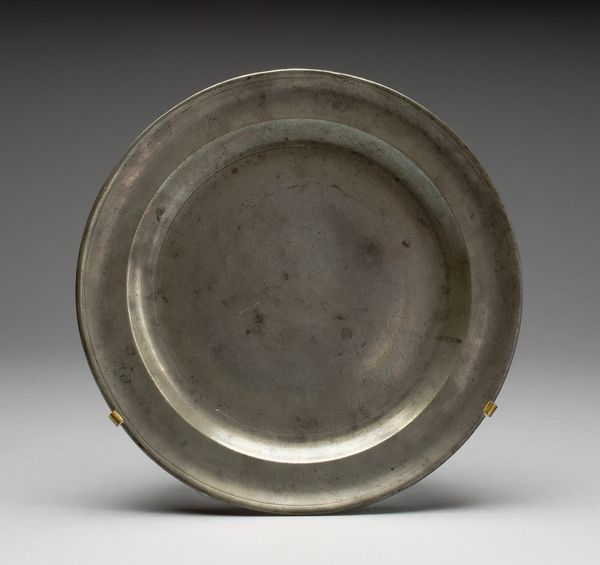
ceramic, earthenware
#
ceramic
#
earthenware
#
ceramic
#
indigenous-americas
Dimensions: 6 × 25.4 cm (2 3/8 × 10 in.)
Copyright: Public Domain
Editor: Here we have a Chimú Blackware Plate, likely made between 1000 and 1400. It's ceramic earthenware and has a smooth, almost metallic, finish. I'm immediately struck by how simple and elegant it is. How do you interpret this work within its cultural context? Curator: Well, that elegance is precisely what I find compelling. We must consider this plate within the power dynamics of the Chimú society. Blackware ceramics, with their labor-intensive production, weren’t just functional. Their creation involved specialized labor. Think about what that implies for gendered roles in society and how knowledge was passed down through the generations. Editor: That's interesting. So, it wasn't simply a dish, but a reflection of the social structure? Curator: Exactly. The uniformity and sheen might also speak to larger societal values – perhaps an emphasis on conformity or the reflection of power through objects of daily use. Can we think about it also as a form of cultural resistance, since this artistic output comes after the decline of other regional aesthetics? Editor: That’s a perspective I hadn't considered. So, its simplicity could also be a statement? A conscious choice, rather than just a lack of resources or skill? Curator: Precisely. It makes you wonder, doesn't it, what narratives this seemingly simple plate holds about gender, labor, and resistance in the Chimú world? How much these people struggled to ensure this was passed onto to later generations Editor: Definitely. I’ll never look at a simple ceramic plate the same way again! Thank you, Curator! Curator: My pleasure! It is up to us to never look at any type of art the same way again. There is so much beauty in every shape.
Comments
No comments
Be the first to comment and join the conversation on the ultimate creative platform.
